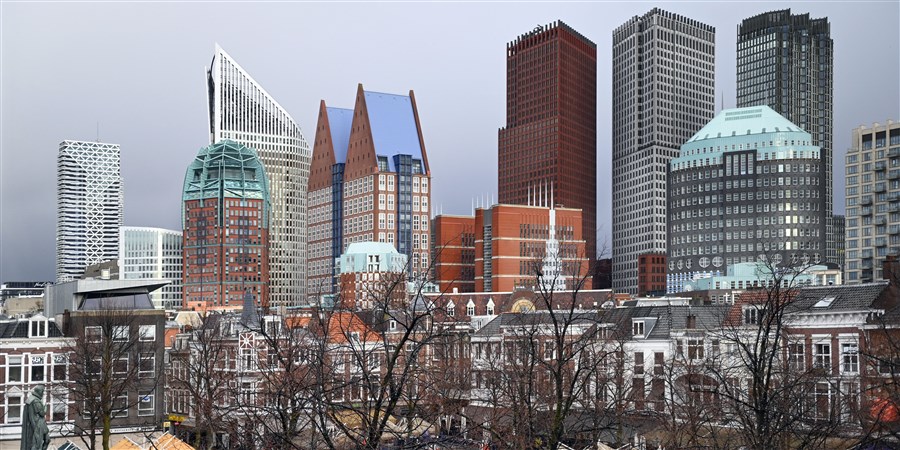Public sector was largest contributor to economic growth in 2024

Government consumption consists of government spending on goods and services for society. This mainly concerns spending on health care, public administration (central government and municipalities) and subsidised education (such as schools and universities).
| Jaar | Government consumption (percentage point) | Other parts of the economy (percentage point) | Economic growth (percentage point) |
|---|---|---|---|
| 2015 | 0.0 | 2.2 | 2.1 |
| 2016 | 0.3 | 2.1 | 2.4 |
| 2017 | 0.3 | 2.5 | 2.8 |
| 2018 | 0.4 | 1.8 | 2.3 |
| 2019 | 0.7 | 1.6 | 2.3 |
| 2020 | 0.4 | -4.3 | -3.9 |
| 2021 | 1.2 | 5.1 | 6.3 |
| 2022 | 0.3 | 4.7 | 5.0 |
| 2023 | 0.7 | -1.3 | -0.6 |
| 2024* | 0.9 | 0.2 | 1.1 |
| * provisional figures | |||
Rise in production-related consumption and social benefits
Government consumption consists of, on the one hand, production-related consumption, which is mainly determined by the government’s production costs, such as employee compensation and intermediate consumption. This form of government consumption grew by 3.9 percent in 2024, adjusted for price changes. This growth occurred partly because the number of civil servants employed by central government and municipalities increased, just as it did in 2023 too.
The other component of government consumption consists of in-kind social benefits. These grew by 3.2 percent in 2024, adjusted for price changes. The majority of in-kind social benefits relate to care (spending under the Health Insurance Act (ZVW), the Long-Term Care Act (WLZ)) and childcare benefits. Subsidised rents and subsidised student travel products are other examples of in-kind social benefits. This type of consumption takes the form of purchases from market participants made by the government on behalf of households, in order to provide financial support for citizens against risks such as illness or to provide housing, for example.
| Jaar | Production-related consumption (% change compared with previous year) | In-kind social benefits (% change compared with previous year) | Government consumption (% change compared with previous year) |
|---|---|---|---|
| 2015 | -0.5 | 0.3 | -0.2 |
| 2016 | 1.1 | 1.8 | 1.4 |
| 2017 | 0.6 | 2.3 | 1.3 |
| 2018 | 0.7 | 3.1 | 1.7 |
| 2019 | 2.3 | 3.4 | 2.8 |
| 2020 | 4.2 | -1.9 | 1.6 |
| 2021 | 3.8 | 5.9 | 4.7 |
| 2022 | 0.8 | 1.9 | 1.3 |
| 2023 | 2.5 | 3.2 | 2.8 |
| 2024* | 3.9 | 3.2 | 3.6 |
| * provisional figures | |||
Government consumption makes up over 25 percent of the Dutch economy
In 2024, government consumption in the Netherlands was 25.8 percent of gross domestic product (GDP). That was the highest share of GDP ever, with the exception of 2012. The share of government consumption in the economy has now risen for two consecutive years. Belgium was the only other country in northwestern Europe where this was the case.
The Netherlands has a relatively high share of government consumption as a share of its economy. In Belgium and France, government consumption made up around 24 percent of the economy in 2024. In Germany it was 22 percent, and in the United Kingdom it was 21 percent. Within the European Union, only Sweden and Finland had higher shares of government consumption in GDP than the Netherlands.
| Land | 2024* (% of GDP) | 2023 (% of GDP) | 2022 (% of GDP) |
|---|---|---|---|
| Netherlands | 25.8 | 25.1 | 24.3 |
| France | 24.2 | 24.1 | 24.6 |
| Belgium | 24.1 | 23.6 | 23.4 |
| Germany | 22.3 | 21.6 | 22.0 |
| UK | 21.0 | 20.7 | 20.8 |
| Source: CBS, Eurostat, ONS | |||
| * provisional figures | |||
Sources
- Eurostat - Gross domestic product (GDP) and main components
- UK Office for National Statistics (ONS) - GDP first quarterly estimate time series
Related items
- News release - Economic growth of 0.4 percent in Q1 2025